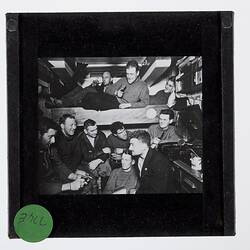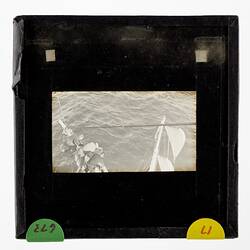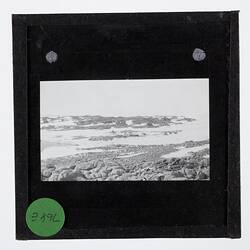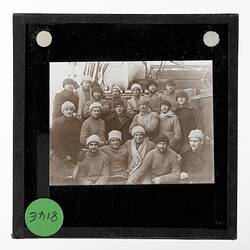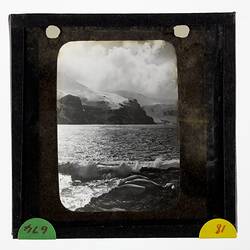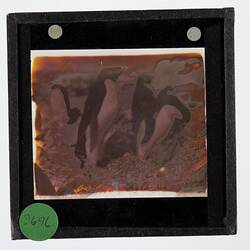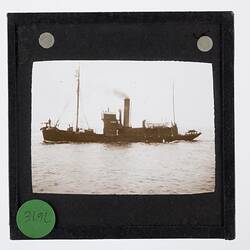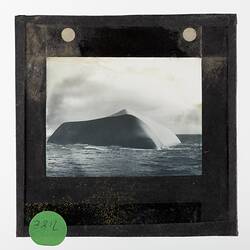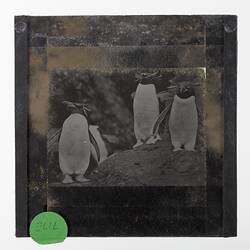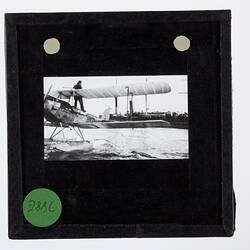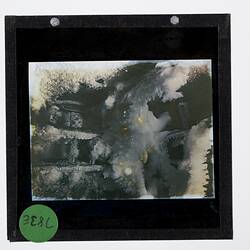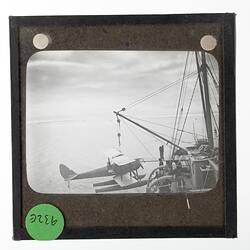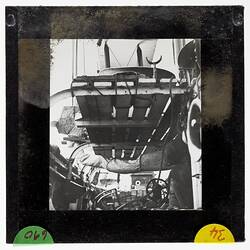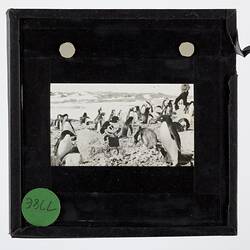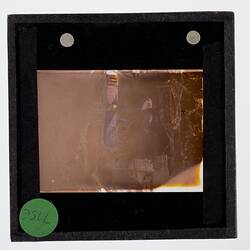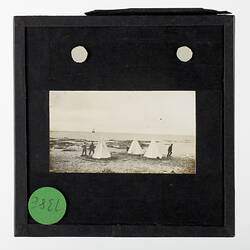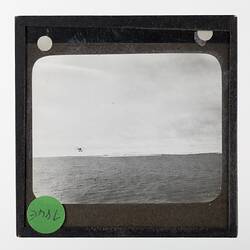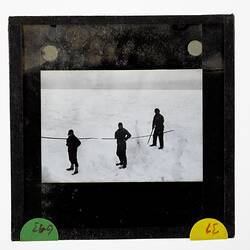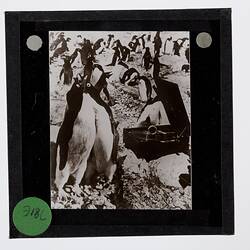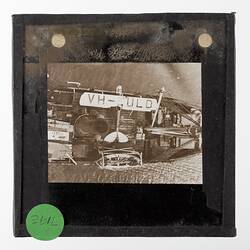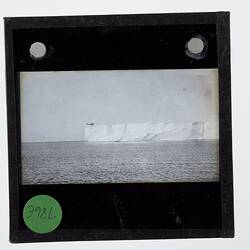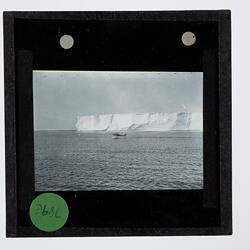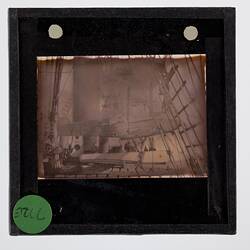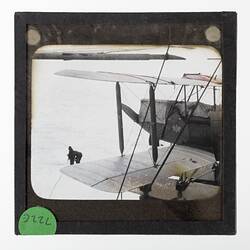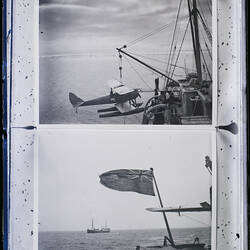Summary
Gilbert Eric Douglas (1902-1970) was a Royal Australian Air Force (RAAF) air officer and Antarctic explorer. He was awarded a Polar Medal in 1934 for his participation in the 1929-1931 British, Australian and New Zealand Antarctic Research Expedition. Douglas also served as the commanding officer of the RAAF contingent of the Discovery II during the 1935-1936 rescue of the Lincoln Ellsworth and Herbert Hollick-Kenyon.
Early Life
Gilbert Eric Douglas, known as Eric, was born on 6 December 1902 to Elizabeth (Bessie) and Gabriel (Gilbert) Douglas at Parkville, Victoria. His father Gabriel was a Watchmaker. He studied Mechanical Engineering at Swinburne Technical College, Hawthorn, graduating in 1920.
RAAF
In November 1920 just before his eighteenth birthday Eric joined the Australian Air Corps as an Air Mechanic, becoming an Aero Fitter in the Royal Australian Air Force (RAAF) when it was formed in March 1921. In 1927 as a Corporal he was chosen to undertake a Flying Training Course at the RAAF's No 1 Flying Training School at Point Cook, graduating as a Sergeant Pilot in that same year. He came first in his course year in practical flying and third in the theory of flying. Before learning to fly Douglas had accompanied many RAAF pilots as an 'Air Mechanic and Fitter' passenger on cross country flights around Victoria and New South Wales. In April 1929 he took part in the search for the crew of the Kookaburra in the Northern Territory and was recommended for the Air Force Medal for his part in the mission.
BANZARE
Promoted to Pilot Officer in July 1929, Douglas was selected to participate in the 1929-1931 British, Australian and New Zealand Antarctic Research Expedition (BANZARE or BANZ) along with the senior pilot, Flying Officer Stuart Campbell. The two RAAF Airmen not only had to fly the expedition's Gipsy Moth VH-ULD but they also had to uncrate it and assemble it. The aeroplane, which was fitted with floats or skis, was bought new in England and crated from London on the Expedition's ship Discovery.
The aeroplane was first flown by Campbell and Douglas on 31st December 1929. On this flight the Antarctic mainland and several outlying islands were sighted, the Australian base of Mawson is now situated in this locality. The reconnaissance flights undertaken by Campbell and Douglas were invaluable supporting with numerous tasks: looking for safe passages through the ice for the Discovery; assisting with creating charts and maps; scouting and naming new locations; and for Captain Frank Hurley's aerial photography. Sometimes Campbell and Douglas would fly together and at other times one pilot would take up a passenger which was often Sir Douglas Mawson or Frank Hurley.
Douglas was a keen amateur photographer and worked with the Official Photographer and Cinematographer, Frank Hurley. Museums Victoria holds a series of 332 images images of Antarctica taken by Douglas and Hurley during the BANZARE voyages.
Led by Sir Douglas Mawson BANZARE was supported by the British, Australian and New Zealand Governments and private backers, including the Melbourne businessman MacPherson Robertson. Conducted over two summers (1929-1930 and 1930-1931) the expedition made three new landings, and with the aid of the Gypsy Moth seaplane flown by Douglas and Campbell, traversed the whole Antarctic coastline from 45°E to 160°E. This stretch of land would later become the Australian Antarctic Territory.
Not just an opportunity to claim British sovereignty over Antarctic lands (with the understanding they would later be handed to Australia) the expedition also undertook an extensive programme of scientific work and observations. In fact the scientific results were so voluminous that reports were still being published three decades later.
Search for Ellsworth & Hollick-Kenyon
Following the expeditions Douglas resumed his duties with the RAAF working as an instructor and lecturer. He was awarded the Polar Medal and Bar in 1934 for his part in the BANZARE expedition.
Douglas' final journey to Antarctica was in 1935-1936 as part of the search team for the American explorer Lincoln Ellsworth and his piolet Herbert Hollick-Kenyon. Promoted to Flight Lieutenant he was appointed Officer-in-charge of the RAAF contingent on the rescue ship Discovery II. Recommendations for Douglas to be appointed came from Sir Douglas Mawson and Captain John King Davis who was the legendary Master of the Antarctic ship Aurora and he had been Captain of the Discovery on BANZARE voyage one. Captain Davis was in charge of the Australian input of this search for Ellsworth and his companion. From the RAAF Moth airplane Douglas sighted Hollick-Kenyon on 15 January 1936 at Little America. Following Douglas' successful sighting a rescue team was dispatched from the Discovery II to collect the two men.
Life after Antarctica
On 6 January 1934 he married Ella Sevior at Christ Church, South Yarra, with Anglican rites. From 1934 to 1938 Douglas was a Lecturer on Aero Engines (Practical) to Flying Cadet Courses. During this time, 1935-1940, he was also Officer in Charge and a Test Pilot at both Point Cooke and Laverton. In 1940 he was promoted to Commanding Officer of No 1 Aircraft Depot, RAAF, Laverton. In 1946 Douglas was appointed Station Commander in Amberley, Queensland, where he had been stationed as Commanding Officer of No 3 Aircraft Depot since 1942. He retired from the RAAF on 1 July 1948 with the rank of Group Captain.
Retirement from the RAAF
Following his retirement Douglas worked as a civilian technician with the Navy's Aircraft Department of Maintenance and Repair at the Victoria Barracks, Melbourne. His skills and knowledge were soon recognised and he was appointed civilian Head of the Department until his retirement in early 1965. He was also recognised as an Aeronautical Engineer by the Royal Aeronautical Society (of Australia) and served as the Honorary Treasurer of the Society for a time. He passed away on 4 August 1970 at Heidelberg, survived by his wife, son and two daughters.
References
Wilson, David,1996, 'Douglas, Gilbert Eric (1902-1970), air force officer', in John Ritchie (ed.), Australian Dictionary of Biography, vol. 14, Melbourne University Press, Melbourne, pp. 23-24.
McCarthy, G.J, 1993, 'Douglas, Gilbert Eric (Eric) (1902 - 1970)', Encyclopedia of Australian Science, retrieved 20 February 2013, http://www.eoas.info/biogs/P001563b.htm
More Information
-
Keywords
Antarctic Expeditions, Antarctic Exploration, Antarctic Research, Antarctica, Photography, Australian Military Forces, Aircraft
-
Authors
-
Article types


